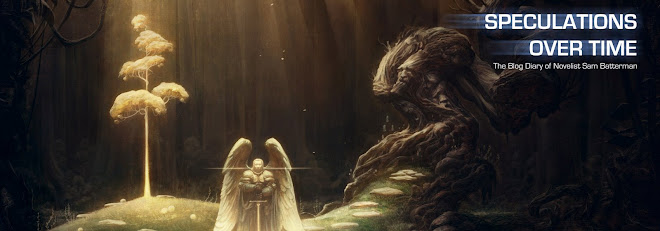Well, the first draft of
Maximal Reserve is done. This means the general story, characters, chapters, length (and depth of the book) and basic tone of the book are complete. This doesn't mean that the book is finished, but it does mean that how the book starts, runs and ends is essentially done.
Unlike Wayback--where, to be honest with you--I had little to no idea what I was doing until the edit stage, Maximal Reserve started with the foundations that I learned along the way with my first book. I tried to take the criticisms of Wayback and my strengths from Wayback and combine them. People generally liked the story of my first book and the scene descriptions were called out as strengths with character development and dialog being areas that some felt could use work.
I agree. So, on Maximal Reserve I focused on Characters--characters that I now love. In Wayback, the science team was the protagonist (or perhaps Jim Spruce was depending on who you ask) - in Maximal Reserve you get to know the protagonist, warts and all, from the very beginning. It has the same twists and turns that my first book was known for and additional dimension -- better relationships, better romance, better emotion--better everything.
People ask me what it's like to write a book and I suspect each one is a bit different, but now I focus my answer on what I relied on for the last seven months--structure and engineering.
How can art be engineered? It has to be to work. Fiction has structure - whether it's conventional, contemporary fiction or literary fiction - there is a formula that must be considered. It's not enough to have a good start or prologue--is there enough "ummph" to make it 80,000-100,000 words?
For me the challenge is around 30,000 words where the transitions occur and the middle of the book feels like it's sagging. It takes focus and rewriting to tame a manuscript and get to the resolution in a meaningful way.
Here are some things that I kept asking myself all through the writing of Maximal Reserve:
- Is there tension - everywhere?
- How are the transitions handled between Act I and Act III?
- How does the protagonist grow during the book?
- What is the relationship between the antagonist and the protagonist?
- Do the subplots slow down the story, or support it?
- In my case, does the science overwhelm the story, or support it?
So, with 90,000 words in the bank, I can now share the synopsis of Maximal Reserve...more news will be coming...What's next? Well, I have a whole raft of early readers and critics lined up to shred the manuscript (from a critical perspective).
Will the story change as a result? Undoubtedly. This is an early look at how the book will be perceived by the rest of the world. I can't wait to hear what they think...good or bad.
Phillip Channing was just an ambitious college graduate who wanted to make his mark on the world. He didn’t know that mark would be the greatest oil discovery of all time–in the wrong place. Phillip finds the largest oil reserve in history, dwarfing the lucrative reserves in Saudi Arabia, and threatening to change the balance of power and wealth in the favor of the most unlikely country of all.






















